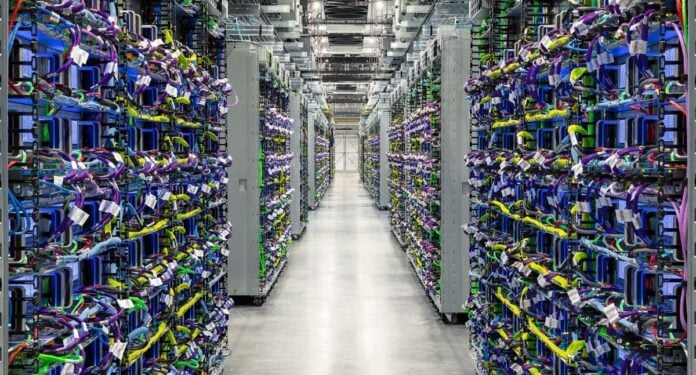Cloud TPU v3
Tensor Processing Units, or Cloud TPUs, are Google’s own machine learning accelerators created especially to perform exceptionally well on workloads centred around matrix multiplications, a key neural network function. This essay dives into the specifics of Cloud TPU v3, examining its capabilities, design, and the ways in which it enables complex machine learning operations.
TPUs vs Conventional CPUs in Machine Learning
Computers’ workhorses, central processing units (CPUs), are capable of performing a variety of jobs. However, because of their general-purpose architecture, CPUs struggle with the compute-intensive training and inference of deep learning models.
In contrast, TPUs are specifically made to handle machine learning workloads. They specialise in matrix operations and optimise data transfer within the chip to generate notable advances in performance.
The main variations are summarised in the following table:
| Feature | CPU | TPU |
|---|---|---|
| Architecture | General-purpose | Specialized for matrix operations |
| Instruction set | Complex, supports various operations | Simpler, focused on matrix instructions |
| Cores | Fewer, high-performance cores | Many lightweight cores |
| Memory access | Flexible, slower access times | Optimized for data locality, faster access |
| Power efficiency | Lower | Higher efficiency for specific workloads |
The Cloud TPU v3 Architecture is revealed
Comparing Cloud TPU v3 to earlier generations, there has been a noticeable improvement. The following enumerates its key characteristics:
Systolic Arrays
A Cloud TPU v3’s central processing unit is a systolic array. Envision an enormous array of processing components, each skilled in carrying out multiply-accumulate operations, which are the foundation of neural network calculations. These components work together to maximise performance by facilitating efficient data flow between them.
Dual Systolic Arrays
Cloud TPU v3 has two separate systolic arrays per chip, which doubles the amount of computing power that is available. This is in contrast to earlier versions. Improved inference skills and quicker training times result from this.
HBM2 Memory
High Bandwidth Memory 2 (HBM2) is included into Cloud TPU v3’s on-chip memory. When compared to conventional DDR5 memory, HBM2 has a substantially larger bandwidth, which allows for faster data access for chip calculations.
Interconnect Fabric
Within a single TPU pod, several Cloud TPU v3 chips are connected by a fast fabric. This makes it possible for several TPUs to communicate and share data efficiently, which makes it easier to distribute heavy training datasets and model workloads.
The Benefits and Performance of Cloud TPU v3 Power
Outstanding performance is provided by Cloud TPU v3 for machine learning tasks. The following are some main advantages:
Faster Training Times
Complex neural network models can be trained substantially faster because to the combination of dual systolic arrays and optimised memory architecture. This makes it possible for developers and researchers to explore new architectures effectively and to iterate on models more quickly.
Enhanced Inference Performance
Cloud TPU v3 performs exceptionally well when executing trained models for practical uses. Because of this, it can make predictions more quickly and accurately, which makes it perfect for applications like recommendation systems, picture recognition, and natural language processing.
Cost-Effectiveness
Because Cloud TPU v3 has better performance and power efficiency than traditional CPU-based training, it can save a lot of money. This makes it possible to increase machine learning workloads without having to pay enormous costs.
Scalability
By adding additional pods to a machine learning cluster, Cloud TPU v3 pods may be expanded horizontally. Users may now manage enormous datasets and train even more sophisticated models thanks to this.
Use cases for Cloud TPU v3
Cloud TPU v3 is used in many different fields where large-scale machine learning is essential. Here are a few well-known instances:
Picture Recognition and Computer Vision
Cloud TPU v3’s speed helps train strong models for item identification, picture categorisation, and facial recognition. Cloud TPU v3 speeds up NLP model training for text summarization, sentiment analysis, and machine translation.
Natural Language Processing
Personalisation engines employ Cloud TPU v3 to make faster and more accurate suggestions in social media and e-commerce recommendation systems.
Scientific Research
Large-scale simulations that take advantage of Cloud TPU v3’s computing capability are essential to fields like computational biology, materials research, and climate modelling.
Drug Discovery
To speed up the drug discovery process, pharmaceutical organisations use Cloud TPU v3 for tasks like simulating protein folding and creating pharmacological molecules.
Gcp slurm
GCP and Slurm are formidable companions for HPC workloads on Google Cloud Platform. Description of GCP Slurm and its benefits:
GCP Slurm?
- Open-source workload manager Slurm schedules jobs on big and small Linux clusters.
- Slurm’s features are used to establish and manage GCP Slurm clusters.
GCP Slurm benefits
Easy HPC cluster management: GCP Slurm makes GCP Slurm cluster setup and management simple.
Scalability: You may quickly adjust cluster resources to meet workload demands.
Flexibility: GCP Slurm enables flexible deployment configurations to meet your needs.
Manage Data: The current version uses Google Cloud Storage for job workflow data migration.
Supporting Hybrid Cloud: For hybrid deployments, you can connect an on-premise Slurm cluster to Google Cloud.
Tpu v3 pricing
The cost of Google Cloud TPU is determined by the hourly consumption per chip, not by the total number of cores in a chip. The deployment methodology (committed use discounts vs. on-demand discounts) and the region in which you utilise it also affect the cost. Here’s a little explanation:
- Pricing Structure: Hourly Rate per TPU chip
- Deployment model and region are the pricing factors.
Regretfully, Google keeps its TPU prices under wraps. To give you an idea, TPU v3 price for on-demand usage is estimated to be between $2.00 and $2.20 per chip per hour.
How to Utilise Cloud TPU v3
Smooth access to Cloud TPU v3 instances is provided by Google Cloud Platform (GCP). Utilising a variety of tools and frameworks, users may include TPU power into their machine learning workflows.


